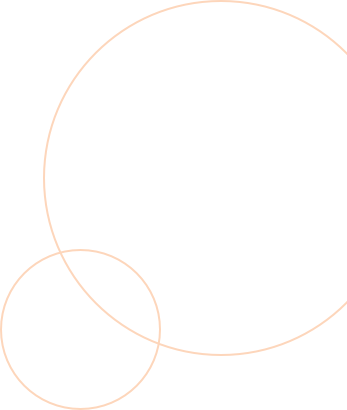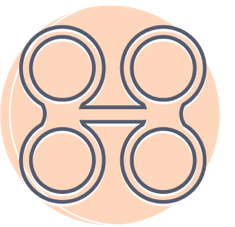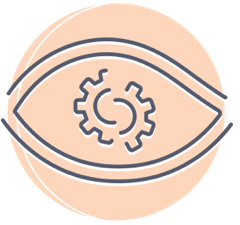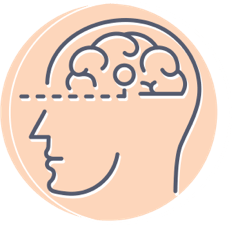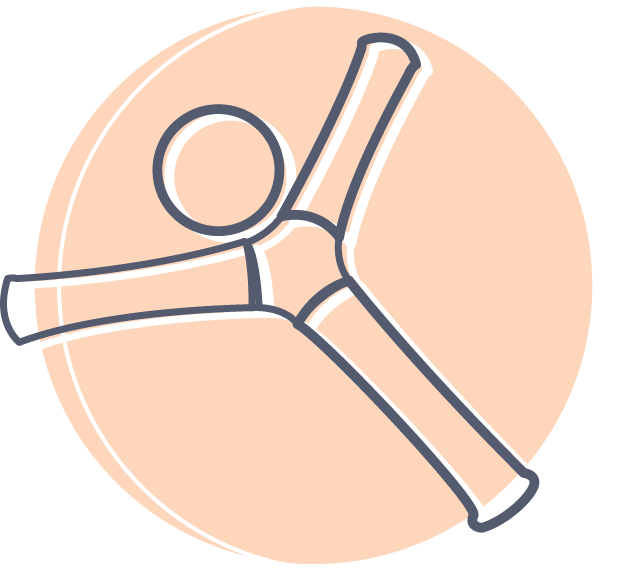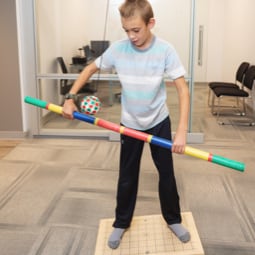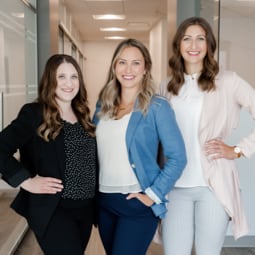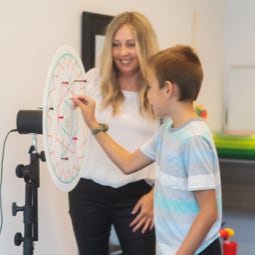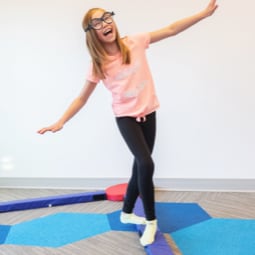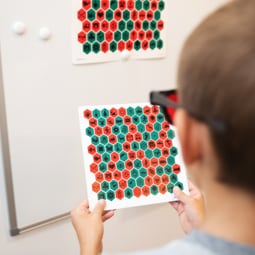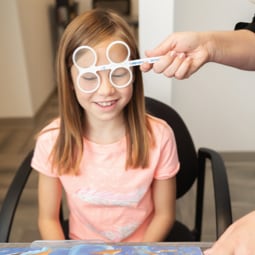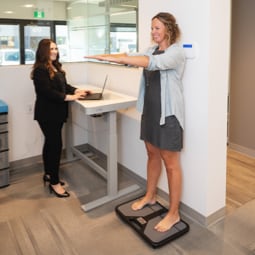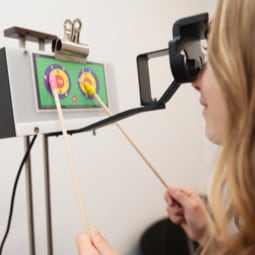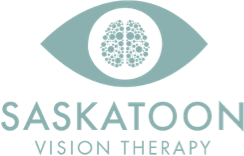WHAT IS NEURO-VISUAL REHABILITATION, OR VISION THERAPY?
This is a common question that we hear when describing what it is that we do at SVT. To answer the question, we need to first begin by establishing what the term “vision” truly means. While 20/20 or visual clarity has become ubiquitous when describing a perfectly functioning visual system, this is far from being the only important factor to assess. In fact, there are several other measurable and equally important factors that must be functioning well if one is hoping to obtain or regain optimal visual performance and comfort.
Assessment and treatment of these areas of visual function is what we do. Whether the visual issue is developmental in nature (strabismus and amblyopia), academic (vision-related learning difficulties), acquired (brain injury or concussion) or sports-related (sports vision training), we are fully equipped at SVT to properly assess, advise and treat when indicated.
HOW IS A FUNCTIONAL VISION EVALUATION DIFFERENT FROM A REGULAR EYE EXAM
A regular eye exam looks at central eyesight/acuity (if you need a glasses prescription to see clearly), eye health, and screens for basic eye functions. A functional vision evaluation is a much more in-depth evaluation of how the eyes are working together with the brain for vision, visual efficiency and visual information processing. Visual efficiency is related to the muscles in and around the eyes, how visual information enters your brain through the eyes, tracking, eye teaming, bringing objects into focus and the ability to move the eyes in all directions. Visual information processing is what you do with this data: how you analyse the visual information that you receive. This means understanding of orientation, visual motor skills, and perceptual skills like visual memory. The following list will describe some of the visual efficiency and visual information processing skills that are routinely assessed during a functional vision evaluation:
Visual Efficiency Skills:
Given that the majority of us experience the world as one single image, it’s easy to forget that our two eyes must intricately team together to make this occur. When objects are presented to us at near (reading, computer, etc.), our two eyes must turn inwards together in unison and effectively focus on the object to prevent visual confusion and doubling. This is also true when our eyes turn outwards and relax focus to view a distant object. Visual efficiency skills are comprised of a set of objective, detailed and measurable findings that are used to determine how your eye tracking and teaming compares to normative values.
- Vergence: Eye Teaming
- Accommodation: Eye Focusing
- Accommodative and Vergence Facility: Relaxation and engagement of visual focus (transitioning from near to far in rapid succession)
- Ocular Alignment: How our eyes align with one another can have a major impact on symptoms of headaches and dizziness
- Stereopsis: Depth Perception. Deficits in stereopsis are common in those struggling with driving performance or balance issues
- Saccades: Rapid, ballistic eye movements that abruptly change the point of fixation. These eye movements are used heavily while reading
- Smooth Pursuits: Slow, tracking eye movement designed to keep a moving stimulus on our fovea. These eye movements are used while scanning busy visual scenes
- Vestibulo-Ocular movements: Stabilizing eye moments that compensate for movements of our head. Deficits in vestibulo-ocular movements are common in those struggling with dizziness and balance issues
Visual information processing:
Visual Perceptual deficits are common following brain injury or in cases of Vision Related Learning Difficulties.
- Laterality & Directionality: An understanding and projection of one’s understanding of directional concepts. Deficits in this area are common with those that struggle with left/right concepts and reverse letters, numbers, or whole words.
- Tracking: Combining pursuits, saccades, and symbol decoding in the brain. Tracking combines following a moving target and switching fixation from one target to another. It is a skill that permits easy shifting of the eyes along the line of print in a book, a rapid and accurate return to the next line and quick and accurate shifts between distance and near, or from one distance to another. Inadequate eye movement control may cause an individual to lose their place when reading, and skip or omit small words when reading.
- Reading mechanics: Analysis of eye movements using an infrared tracking system while reading as well as analysis of comprehension and fluency.
- Visual Motor Skills & Integration: Ability for one’s hands and eyes to work together effectively.
- Clinical Test of Sensory Integration and Balance: Assessment of how the three main sensory feedback systems that are used to gather input and maintain balance in the human body and analysis of how they are functioning relative to one another. 1. Proprioception (the system of touch, muscle, joint, and tendon receptors that keeps you in the position you desire) 2. Vision (sensory receptors in the retina send impulses to the brain that represent the visual world around us and help us to localize in space) 3. Vestibular (motion, equilibrium, and spatial orientation are provided through an apparatus within the inner ear)
- Visual Discrimination: Ability to identify differences in visual images.
- Visual Memory: Ability to retain or recall visual detail.
- Visual Spatial Relationships: Ability to perceive the position of objects relative to each other.
- Visual Form Constancy: Ability to mentally manipulate visual forms and predict outcomes.
- Visual Sequential Memory: Ability to remember visual details in the correct sequence.
- Visual Figure Ground: Ability to focus on a specific piece of information in a busy background.
- Visual Closure: Ability to visualize a complete whole when given incomplete information.
HOW DOES VISION THERAPY HELP?
When it comes to acquiring information from our world, vision is our dominant sense. It has been estimated that as much as 80% of all classroom-based learning is visual in nature. Inefficiencies in how we use our eyes or visual processing system can therefore contribute to a host of issues that arise in the classroom, in sports or in other areas of life.
Reading skills, attention, balance, eye-turns, lazy eyes, and the visual symptoms following brain injury can all be improved by our non-invasive treatments. Giving the brain the necessary and directed opportunities & meaningful experiences to improve visual performance and develop new skills is the basis for all of the programs that we create.
WHAT CAN I EXPECT AT MY INITIAL EVALUATION?
Our initial evaluations are typically 75-90 minutes long, with the entire duration being spent directly with one of our doctors. Testing will cover a comprehensive list of detailed aspects of visual function. Following assessment, a report review session may be arranged during which we will discuss your findings with you and outline options for treatment.
WHAT SHOULD I BRING TO MY INITIAL EVALUATION?
- All current glasses and/or contact lens prescriptions
- A list of any medications
- Your Saskatchewan Health Card
- Socks! We ask that patients (and guardians) remove their outdoor footwear when attending assessments and therapy sessions
WHAT CAN I EXPECT DURING A SESSION OF VISION THERAPY?
Our Vision Therapy sessions are booked as 45 minute appointments and are always one-on-one. 30 minutes of the appointment will be dedicated to working through visual activities and exercises specifically chosen for you or your child. 15 minutes at the end of each session will be used to describe the homework that we will ask you to complete prior to your next appointment 1 week later. All necessary homework materials and devices will either be lent or provided from our office. You will not need to source any of the necessary products or tools elsewhere.
HOW MANY SESSIONS OF VISION THERAPY WILL I NEED?
Program length will depend entirely on your particular diagnoses and findings at your initial Functional Vision Evaluation. Unfortunately, we cannot provide an estimate of program length without assessment. Typical programs at our office run between 15-20 in-office or online sessions.
WHAT SORT OF ACTIVITIES AND EXERCISES CAN I EXPECT?
This will depend on the particular visual condition that you or your child presents with. Some activities will be performed in free space and some will make use of the advanced computer-based programs and software that we possess here in-office. Activities and direction will all be tailored to and based on each individual presenting case. Before leaving the office after each session, we will make sure that you understand the home recommendations completely and provide you with a detailed list of directions and instructions to use.
AFTER VISION THERAPY, AM I “CURED” OR IS THERE MAINTENANCE WORK I WILL NEED TO DO?
Vision Therapy is used to guide visual function and typically will permanently embed a more efficient way for one to process visual information. We do, however, sometimes recommend and provide the necessary tools for home maintenance after your program is complete.
CAN I PERFORM MY VISION THERAPY VIRTUALLY?
Absolutely! Depending on the particular issue and distance involved, this is certainly an option. A Functional Visual Evaluation will need to first be performed in-person, in order to determine if this will be a suitable option for you or your child.
AM I COVERED FOR VISION THERAPY?
We recommend that patients check with their insurance provider about vision therapy before they visit. Everyone’s coverage is unique and we will certainly provide you with any documentation necessary. If you have any questions about insurance or payments before or after your appointment, we’re happy to help!
RESEARCH & RESOURCES
Where can I learn more?
- Visiontherapycanda.com
- covd.org
- noravisionrehab.com
- oepf.org
- Facebook: Vision Therapy Parents Unite (Group)
Our Location
Our Address
- 110-318 Wellman Lane
- Saskatoon, SK S7T 0G3
Contact Information
- Phone: 306-244-2020
- Fax: 1-306-500-1953
- Email: [email protected]
Hours of Operation
- Closed 1pm-2pm
- Monday: 8:00 AM – 5:00 PM
- Tuesday: 8:00 AM – 8:00 PM
- Wednesday: 8:00 AM – 5:00 PM
- Thursday: 8:00 AM – 5:00 PM
- Friday: 8:00 AM – 5:00 PM
- Saturday: 9:00 AM – 1:00 PM
- Sunday: Closed
